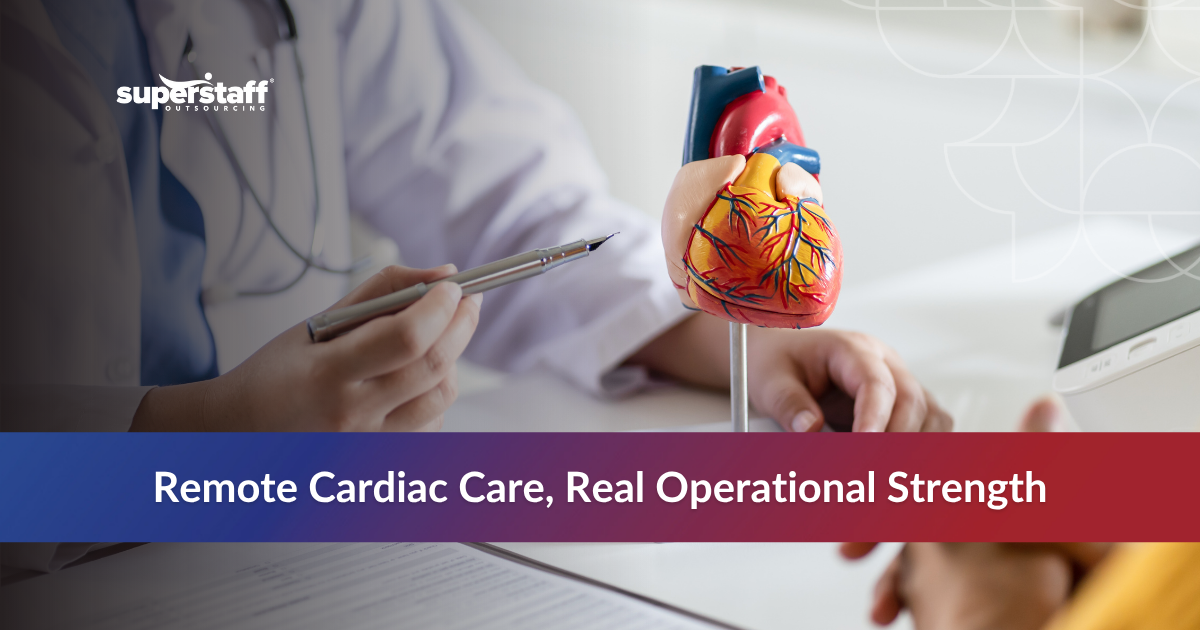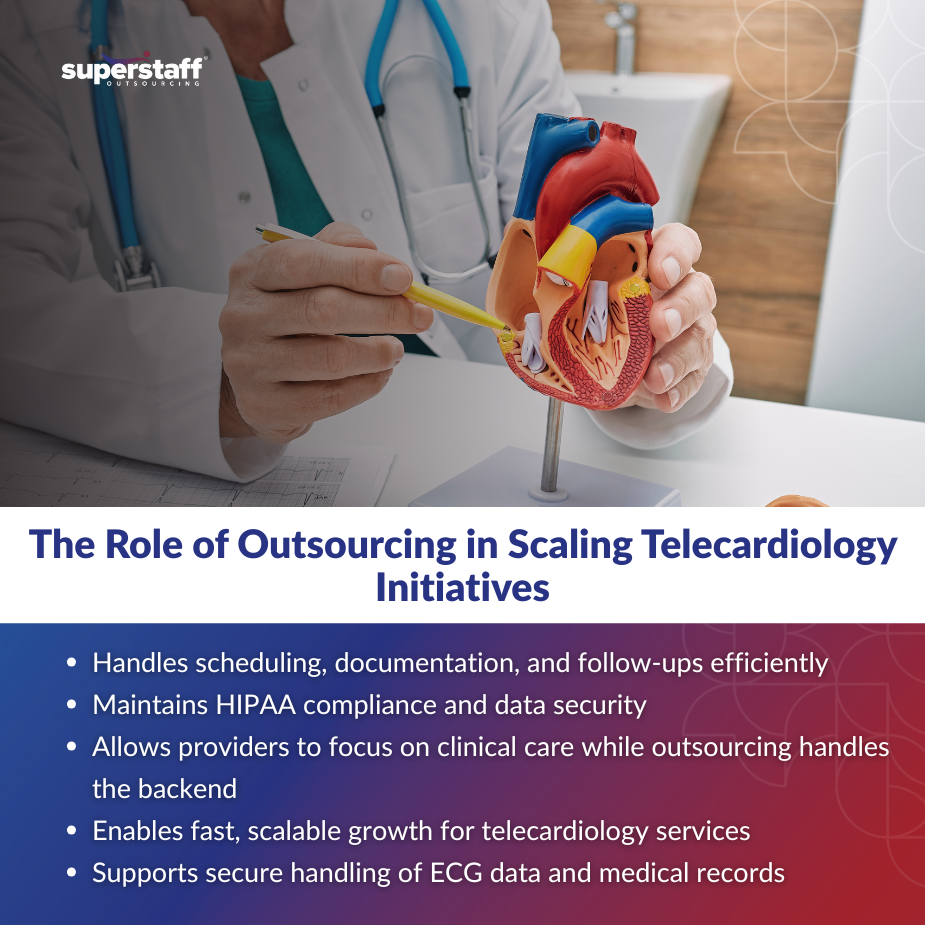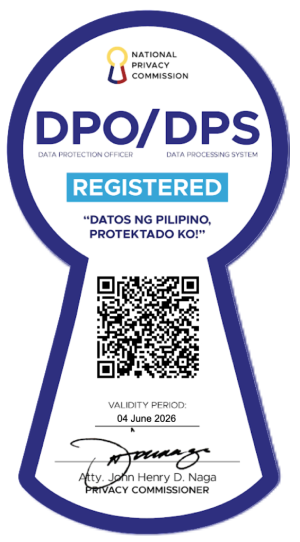
Telecardiology is revolutionizing cardiac care, providing rapid diagnostics and remote monitoring capabilities like never before. No longer confined to hospitals and clinics, cardiology services are now reaching patients in real time—whether they’re in rural communities, recovering at home, or managing chronic heart conditions remotely. This shift is redefining how, when, and where patients access life-saving cardiac care.
The rapid rise of telecardiology is part of a broader digital health revolution that has been accelerated by the COVID-19 pandemic. As hospitals scrambled to reduce in-person visits and optimize resources, telehealth quickly evolved from a convenience to a necessity.
Among the most impactful specialties to embrace this shift has been cardiology, where timely detection and intervention can mean the difference between life and death. Telecardiology has since emerged as a vital tool in delivering efficient, accessible, and patient-centered care, particularly as demand for cardiovascular services continues to increase.
However, with this growth comes operational strain. Many healthcare providers now face challenges in staffing, infrastructure, and compliance as they expand telecardiology offerings. That’s where outsourcing comes in. By partnering with specialized outsourcing providers, healthcare organizations can scale telecardiology solutions effectively, without sacrificing clinical quality or patient trust.
By leveraging the impact of healthcare outsourcing on remote cardiology services, providers can scale operations efficiently while maintaining high-quality care and compliance. This blog explores the benefits of digital transformation in healthcare through the lens of telecardiology and how strategic outsourcing supports long-term success.
Telecardiology—From Niche to Necessity in Modern Healthcare
Telecardiology is the remote delivery of cardiology services through digital communication technologies. From mobile ECG readings to real-time consultations, it enables cardiologists to interpret cardiac data remotely. This enables the delivery of life-saving diagnostics and monitoring to underserved and rural communities.
Understanding what is digital transformation in healthcare helps explain telecardiology’s rapid rise. It represents the shift from traditional in-person care to tech-enabled, data-driven service models, bringing greater speed, accessibility, and efficiency to patient care.
The rise of telecardiology has been driven by several factors:
- The global increase in cardiovascular diseases.
- An aging population requiring continuous heart health monitoring.
- Growing demand in rural areas where cardiologists are scarce.
These trends underscore why telecardiology is no longer a fringe service—it’s now central to modern cardiac care. The approach accelerates diagnosis and intervention, enabling providers to identify warning signs early and prevent serious complications. It also breaks down geographic barriers, providing patients with access to top cardiologists regardless of their location.
However, scaling telecardiology services across a healthcare organization presents real operational and talent-related hurdles.
Scaling Challenges in Telecardiology—Talent, Technology, and Compliance
As promising as telecardiology is, healthcare providers face substantial barriers when expanding this service model. A significant concern is the shortage of trained personnel. Many health systems struggle to find enough specialized technicians and cardiologists who can support remote diagnostics.
Beyond workforce shortages, the infrastructure demands are significant. Telecardiology relies on seamless ECG data transmission, high-resolution video consultations, secure cloud-based platforms, and robust IT support. Managing all this while maintaining compliance with HIPAA and international data privacy standards creates additional pressure.
These challenges are intensified by:
- The need for 24/7 service coverage, especially in emergency cases.
- The risk of uneven care quality due to overstretched internal teams.
This is where the impact of healthcare outsourcing on remote cardiology services becomes clear—it fills in the gaps while preserving quality and compliance.

How Outsourcing Strengthens Telecardiology Operations
Outsourcing provides a practical and scalable solution for healthcare providers seeking to expand their telecardiology services. By tapping into specialized support services, hospitals and clinics can maintain operational excellence even during periods of peak demand.
Outsourcing partners provide access to:
- Certified telecardiology technologists who can handle ECG monitoring and patient support.
- Virtual medical transcriptionists manage clinical documentation, allowing physicians to focus on patient care.
- HIPAA-compliant systems and trained staff who handle sensitive health data securely.
These services allow organizations to:
- Ensure service continuity even when internal teams are overwhelmed.
- Reduce the cost burden of hiring full-time specialized staff.
- Scale up services in response to surging patient needs without sacrificing quality.
Let’s examine the specific telecardiology tasks that healthcare providers commonly outsource today.
Core Telecardiology Functions Suitable for Outsourcing
To keep up with demand and ensure care consistency, many providers are outsourcing routine but critical functions tied to telecardiology. These tasks include:
- Remote ECG reading and initial analysis, enabling faster results turnaround.
- Scheduling virtual appointments and coordinating patient communication.
- Transcription of virtual consults and updating EMRs in real time.
Other high-impact areas include:
- Cardiac data entry and results filing to support longitudinal patient tracking.
- Follow-up communications with patients to ensure adherence to treatment plans and reduce readmissions.
These functions are ideal for outsourcing because they are process-driven, compliance-sensitive, and crucial for service delivery, but do not always require in-house medical staff.
Beyond day-to-day efficiencies, outsourcing provides long-term strategic advantages for healthcare organizations committed to digital growth.
Strategic Advantages of Telecardiology Outsourcing
One of the biggest benefits of digital transformation in healthcare is improved speed to care, and outsourcing enables that transformation at scale. Through specialized outsourcing, providers can offer quicker diagnoses and interventions, improving outcomes for patients with heart conditions.
Strategically, telecardiology outsourcing offers:
- Faster time-to-treatment, which is especially critical in cardiology, where every minute matters.
- Higher patient satisfaction through seamless, responsive virtual care.
- Flexibility to respond to fluctuating demand without long hiring cycles or expensive infrastructure upgrades.
It also allows internal teams to focus on clinical excellence, while external partners manage the operational load.
Achieving these benefits, however, depends on choosing the right outsourcing partner.
What to Look for in a Specialty Healthcare Outsourcing Partner
Outsourcing telecardiology support isn’t just about filling gaps—it’s about enhancing care. The right partner should demonstrate a deep understanding of both clinical workflows and healthcare compliance.
Key qualifications to look for include:
- A proven track record in healthcare outsourcing and telehealth service support.
- Access to trained personnel with clinical experience in cardiology support.
- Robust, HIPAA-compliant data infrastructure and cybersecurity protocols.
Additional factors include:
- Flexible service models that allow scaling up or down based on patient volume.
- Built-in quality control systems to ensure accuracy and consistency.
With the right outsourcing partner, healthcare organizations can confidently expand telecardiology services, meeting the needs of more patients without stretching their internal resources.
The future of cardiac care is remote, and outsourcing is key to making that future sustainable.
The Telecardiology Revolution: Powered by People, Enabled by Outsourcing
Telecardiology is reshaping the delivery of cardiac care—breaking down barriers, accelerating diagnostics, and enhancing patient outcomes. However, as this digital evolution gains momentum, healthcare providers require scalable solutions to keep pace.
The impact of healthcare outsourcing on remote cardiology services is clear: it empowers providers to meet growing demand while ensuring operational efficiency, cost control, and clinical quality. Through strategic partnerships, organizations can unlock the full benefits of digital transformation in healthcare without overburdening internal teams.
Ready to scale your telecardiology services with expert support? Partner with a people-first outsourcing provider like SuperStaff to deliver better patient outcomes—no matter where care is needed.






